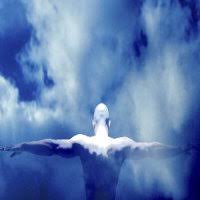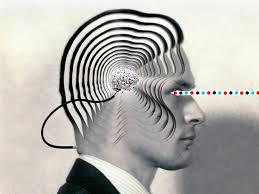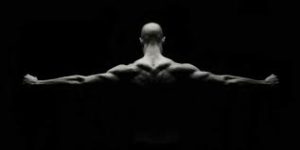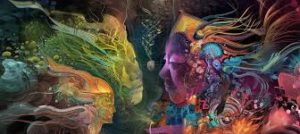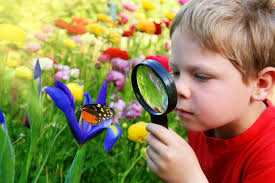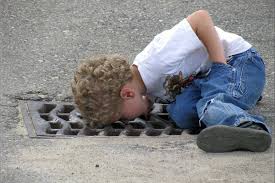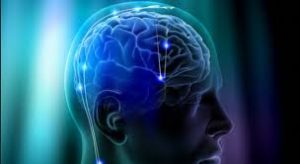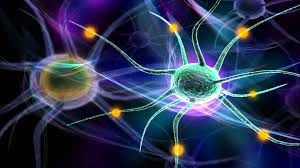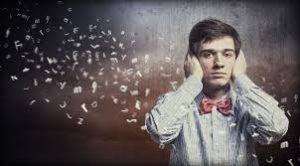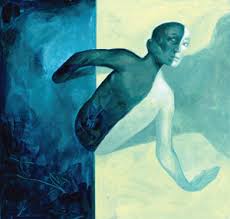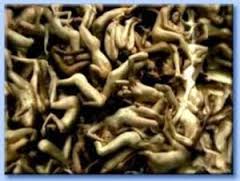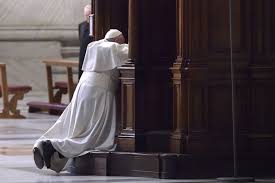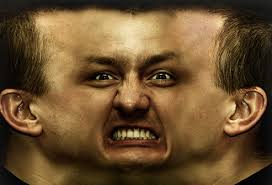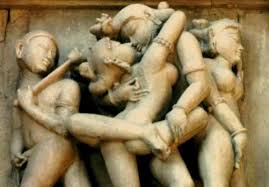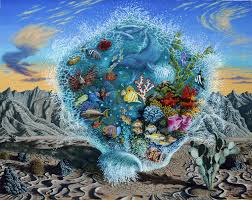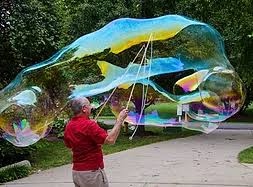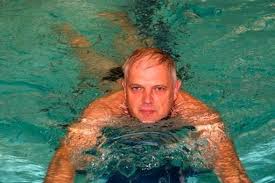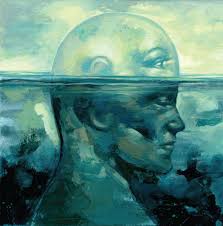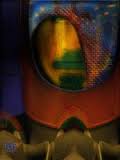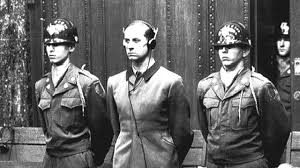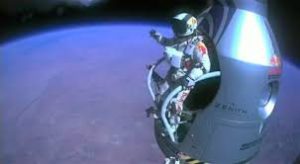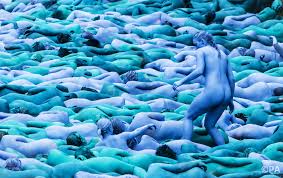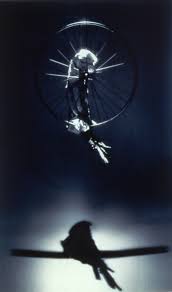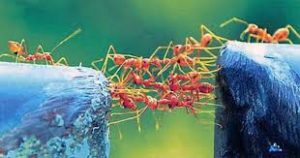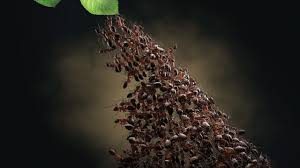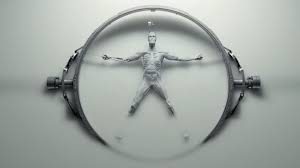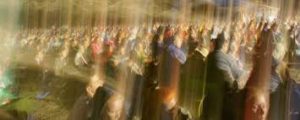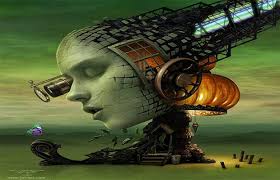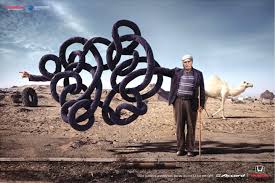The “City of Vanguard “is a place where most things are counter-parted with three different perspectives. The perspective through One’s eyes and Two’s perspective viewed by others. With Three and his replacements. The place where people Create Reality Through Thoughts, and Beliefs.
Category Archives: Electrical Reality
Might Is Right Or Right Is Might?
For centuries it was taken for granted that God was on the side of the strongest, richest nation. Surely, it seemed, if a country was poor or downtrodden, it was because God had made it so.
Such ideas literally held people in chains, fostering slavery and other inhumane practices. The same unfortunately applies to the Eastern concept of nirvana, and to the Christian idea of heaven. Both have been used by those in power to hold down the masses of people, to justify shoddy and inadequate living conditions by promising future bliss in the world after death.
There are many differences between the ideas of nirvana and heaven, but each has been used not only to justify suffering, but also to teach people to seek pain. The idea has been that the more persecuted and maligned a person is, the greater will be the reward in a future existence.
I want to avoid concentration upon esoteric practices in my blogs, but they do sometimes impinge upon the subject matter at hand.
The ideas of penance, fasting to excess, the personal abuse of the body, such as self-flagellation — all of those practices are conducted in the belief that suffering is something to be sought in itself. In such a way pain becomes a sought-after goal, and pleasure becomes subverted into pain.
Quite ordinary people often believe, then, that suffering itself is a way toward personal development and spiritual knowledge. In matters of health, such beliefs can have most unfortunate results. They are often responsible for needless sacrifices of physical organs in imprudent operations.
Some individuals become anxious and worried if they think they are too happy — for to them it means that they are not paying sufficiently for their sins. They may be threatened by some undeniable danger, until finally in one way or another they seek out their own punishment once again — wondering all the time why they are so frequently besieged by poor health or disease.
This kind of syndrome can affect individuals, families, and to some extent entire nations. They mitigate directly against man’s and woman’s health, survival, and exuberance.
Constant fears about nuclear destruction, or other such catastrophes can also fall under this classification.
Large masses of people became so convinced of God’s eventual vengeance and retribution that they began to plan for it.
Their lives became a way of avoiding pain instead of seeking out pleasure or satisfaction. This is true of individuals, but it also applies to many so-called survival groups, who congregate in one or another portion of the country, collecting supplies to carry them over the holocaust and to defend their families from those who might steal their provisions.
Most such people expect a period of chaotic time, in which all laws are broken down. Another version stresses the economic area, foreseeing the collapse of the economy, anarchy, and other conditions that pit one individual against the other.
These people believe, of course, that any given situation will worsen, and be carried to its most disastrous end. That attitude colors all of their other beliefs and actions. Some use religious dogma, and others rely upon scientific dogma to prove their cases, but in any case, they are presented with a world of deception and vengeance.
Good mental or physical health can hardly flourish under such conditions. There are instead most beneficial groups in this country and abroad, who actually, actively, yet peacefully join together to work for worldwide nuclear disarmament, and also to tackle such questions as nuclear waste. Their efforts are directed in other ways also, as they try to convince all areas of the world to share their wealth and foodstuffs equally.
These may be “highflying” goals, however they are positive in nature, aimed toward accomplishment and achievement, and they collect the energies of the people together in a way that stresses cooperation and understanding.
Again, the end does not justify the means — so no amount of war is ever going to produce a meaningful peace.
Such ideas affect every level of life, from the most microscopic onward. It is not that plants understand our ideas in usual terms — but they do indeed pick up our intent, and in the arena of world survival, they have a stake.
I do not want to romanticize non-human life either, or to overestimate its resources, but nature also has its own ways — and in those ways it constantly works toward survival of life in general. Nature may not bail us out, but it will always be there, adding its own vitality and strength to the overall good and health of the planet.
Remember what I said in earlier blogs about the connections between disease and non-disease states. Communication flashes between viruses and microbes, and they can change in the wink of an eye. Once again, then, ideas of the most optimistic nature are the biologically pertinent ones.
This is a good place to bring up again some extreme food practices, such as over-fasting, and an obsession with so-called natural foods.
I am not talking about a natural and healthy interest in the purity of foodstuffs, but of a worrisome over-concern. This is often carried so far that no food seems perfectly satisfying, and the concentration becomes focused upon the fear of food, rather than upon its benefits.
Behind many such attitudes if the idea that the body itself is unworthy, and that starving it somehow cuts down on the appetites of the flesh. We usually end up with a flurry of different kinds of diets.
Some concentrate almost exclusively on protein, some on carbohydrates — particularly rice — but in any case the large natural range of available foods and nutrients are cut out.
This keeps the body in a state of constant turmoil. Some people are so convinced, in fact, that eating is wrong that they diet until they become ravenously hungry, then overeat and force themselves to vomit up the residue.
Other people, in a well-meaning attempt to watch their weight, skip their breakfast entirely — a very poor procedure. It is far better to eat moderate amounts of food in all of the food ranges, and to consume smaller portions more often. I realize that our social mores also dictate our eating habits — but four light meals a day will overall serve us very well, and give the body a more steady, regulated nourishment.
These food ideas are important, since they are passed on from parents to children, and parents often use food as a way of rewarding a child’s good behavior, thus starting the youngster out toward conditions of overweight.
The main issue involved, once again, is the trust of the body.
In any case, there are new lives growing and maturing within each individual, whatever his or her age or circumstances.
The idea of survival reaches far beyond this life experience, and each person has new physical and spiritual existences ever ready — for there is no such thing as extinction. Alive or dead in usual terms, we are always conscious and aware and ourselves, and we are always a part of universal ventures in which we have always been involved, whatever our states of consciousness.
We are supported, never abandoned, and always couched lovingly in the great yet intimate presence of All That Is, whose love forms our breath, our life, our death, as in which the unknown divinity is always blessed and ever known.
It is known and unknown, forming all stages of creativity, and we are held within it, graced to be a part of the divine framework of All That Is.
My blogs, like life itself, have been and are a gift, rising from the immense, never-ending creativity of existence.
Alone, I live within one life that expresses multitudinous voices, and shed its own mercy, gladness, and joy, out into the world at large, enriching it, renewing the springtime, and never truly ending.
To one extent or another, I then speak in these blogs for all peoples, for the united psyches that overflow with thoughts and feelings that are registered by the wind, giving voice to the private, intimate, yet connected lives of men and women throughout the centuries — so that many people, listening to or reading my blogs, hear their own inner voices also, and feel the contours of their own natures, and universal nature as well.
“BEYOND THE HIGHEST CLOUDS”
Behind the highest clouds
man and woman have ever seen
there are mountains and
hidden coves from which all
true proclamations come.
Their sentences are silent
yet they contain a word that
releases and fills secret contracts
between the gods and man and woman,
uttered long ago
uttered without a word or a whisper,
and speaking for me alone
with a magic note
and a secret message
and a sweet response
known to me alone.
When To Ignore, Instructions, Suggestions And Resolutions. A New Beginning
The thoughts and beliefs that we want to rearouse are those that were often predominant in childhood, as mentioned in earlier blogs. They are spiritual, mental, emotional and biological beliefs that are innately present in the birth of each creature. Children believe not only that there will be a tomorrow, and many tomorrows, but they also believe that each tomorrow will be rewarding and filled with discovery.
They fell themselves couched in an overall feeling of security and safety, even in the face of an unpleasant environment or situation. They feel drawn to other people and to other creatures, and left alone they trust their contacts with others. They have an inbred sense of self-satisfaction, and they instinctively feel that it is natural and good for them to explore and develop their capabilities.
They expect relationships to be rewarding and continuing, and expect each event will have the best possible results. They enjoy communication, the pursuit of knowledge, and they are filled with curiosity.
All of those attitudes provide the strength and mental health that promotes their physical growth and development. However simple those ideas may sound to the adult, still they carry within them the needed power and impetus that fill all of life’s parts. Later, conflicting beliefs often smother such earlier attitudes, so that by the time children have grown into adults they actually hold almost an opposite set of hypotheses. These take it for granted that any stressful situation will worsen, that communication will worsen,that communication with others is dangerous, that self-fulfillment brings about the envy and even of others, and that as individuals they live in an unsafe society, set down the middle of a natural world that is itself savage, cruel, and caring only for its survival at any cost.
Our body actually lives on large quantities of joyful expectation.
The fetus is propelled by the expectation of future growth and development. It is bad enough to anticipate that most unfortunate situations will worsen rather than improve, but it is foolhardy indeed to believe that mankind is bound to destroy itself, or that nuclear destruction in nearly inevitable.
Many people no longer believe in life after death, and so large numbers of the population are philosophically denied a spiritual or a physical future.
This deprives body and mind of the zest and purpose needed in order to enjoy any pursuits or activities. Such beliefs make any human endeavor appear futile. There are ways of reacting to the dangers of nuclear energy that are far more healthy and beneficial, and we will discuss these in later blogs.
For now, I simply want to suggest that all such beliefs should be understood and dismissed as soon as possible. We hope to show how most natural health-promoting beliefs can be applied to all mental, physical, or emotional illnesses or difficulties. I want to assure that regardless of our circumstances, age, or sex, we can indeed start over, re-arousing from within ourselves those earlier, more innocent expectations, feelings and beliefs. It is much better if we can imagine this endeavor more in the light of children’s play, in fact, rather than think of it as a deadly serious adult pursuit.
In other words, we will try to instill a somewhat playful attitude, even toward the most severe problems, for the very idea of play encourages the use of the imagination and the creative abilities.
This starting over. Again, because of simultaneous nature of time, beliefs can be changed in the present moment.
There is no need to search endlessly into the past of this life or any other, for the “original” causes for beliefs. Making a change in the present of a certain kind will automatically alter all beliefs “across the board,” so to speak. It is important, however, that we do not strain too hard to achieve results, but allow ourselves some leeway. We react to our beliefs habitually, often unthinkingly, and in usual ideas of time, and in our experience of it — we must allow oneself “some time” to change that habitual behavior.
As we do, we will discover oneself reacting to the desired beliefs as easily and automatically as we did to the undesirable ones. As we do, keep the idea of child’s play in mind, however. this will allow us to keep the entire affair in a kind of suspension.
The child plays at being an adult long before he or she is one, and so we can play with more desirable beliefs while we are still growing into that more beneficial picture.
One of the issues I want to discuss in depth is that of spontaneity in relationship to health and disease.
Our very physical existence itself is dependent upon the smooth functioning of many spontaneous processes. Our thinking, breathing, and motion are all guided by activities that are largely unconscious — at least from the standpoint of what we usually think of as the conscious mind.
Our body repairs itself constantly, and our mind thinks — all without our normally conscious attention. The same applies to all of those inner processes that make life possible. Our thoughts are conscious, but the process of thinking itself is not. Spontaneity is particularly important in the actions of children, and in the natural rhythmic motion of their limbs. Feelings also seem to come and go in a spontaneous fashion.
It is indeed as if some inner spontaneous part of the personality is far more knowledgeable than the conscious portion of which we are so rightfully proud.
Many people, however, fear spontaneity: it evokes extravagance, excesses, and dangerous freedoms. Even people who are not so fervently opposed to spontaneity often feel that it is somewhat suspect, distasteful, perhaps leading to humiliating actions. Spontaneity, however, represents the spirit of life itself, and it is the basis for the will to live, and for those impulses that stimulate action, motion, and discovery.
In the truest regard, our life is provided for us by these spontaneous processes. As I’ve mentioned in previous blogs, at one time the human personality was “more at one with itself.” It accommodated unconscious and conscious experience more equitably. Man and woman were more aware of his and her dreams and so-called unconscious activity.
It is only because civilized man and woman have somewhat overspecialized in the use of one kind of knowledge over another that people fear the unconscious, spontaneous portions of the self. The fear alone causes them to block out still more and more unconscious knowledge. Since the spontaneous portions are so related to bodily activity, they are very important in facilitating good health, and when people feel divorced from their spontaneous selves, they also fell divorced to the same extent from their own bodies. Such individuals become frightened of freedom itself, of choices and of changes. They try desperately to control themselves and their environment against what seems to be a raging, spontaneous mass of primitive impulses from within, and against a mindless, chaotic, ancient force of nature. In the physical world, such behavior often leads to compulsive action — stereotyped mental and physical motion and other situations with a strong repressive coloration. Here any expression becomes almost taboo. The conscious mind must be in control of all actions as much as possible, for such a person feels that only rigid, logical thought is strong enough to hold back such strong impulsive force.
These attitudes may be reflected in rather simple compulsive actions: the woman or man who cleans the house endlessly, whether it needs it or not; the man or woman who will follow certain precise, defined routes of activity — driving down certain streets only to work; washing his or her hands much more frequently than other people; the person who constantly buttons and unbuttons a sweater or vest. Many such simple actions show a stereotyped kind of behavior that results from a desperate need to gain control over oneself and the environment.
Any excessive behavior may enter in, including over-smoking, overeating, and overdrinking.
It will be difficult for some people to believe that spontaneity is to be trusted, for they may be only aware of feeling destructive or violent impulses. The idea of expressing impulses spontaneously will be most frightening under those conditions.
Actually the people involved are repressing not violent impulses but natural loving ones. They are afraid that expressions of love, or the need for dependence will only bring them scorn or punishment. Therefore, they hide those yearnings, and the destructive impulses actually serve to protect them from the expression of love that they have somehow learned to fear.
Science itself, for all of its preciseness in some areas, often equates instinctive, impulsive, chaotic, destructive activity as one and the same.
Nature and the inner nature of man and woman are both seen to contain savage, destructive forces against which civilization and the reasoning mind must firmly stand guard.
Science itself often displays compulsive and ritualistic behavior, to the point of programming its own paths of reasoning, so that they cover safe ground, and steadfastly ignore the great inner forces of spontaneity that make science — or any discipline — possible. As I have said before, spontaneity knows its own order. Nothing is more highly organized than the physical body that spontaneously grow all of its own parts.
As our life is provided for us, so to speak, by these spontaneous processes, the life of the universe is provided in the same fashion. We see physical stars, and our instruments probe the distance of space — but the inner processes that make the universe possible are those same processes that propel our own thinking. It is erroneous, therefore, to believe that spontaneity and discipline are mere opposites. Instead, true discipline is the result of true spontaneity.
Value fulfillment of each and every element in life relies upon those spontaneous processes, and their source is the basic affirmative love and acceptance of the self, the universe, and life’s conditions.
Since ancient times religions has tried to help man and woman understand the nature of his or her own subjective reality — but religion has its own dark side, and for this reason religion unfortunately has fostered fear of the spontaneous.
Instead of promoting the idea of man’s and woman’s inner worth, it has taught people to distrust the inner self and its manifestations. Most churches preach a dogma that stresses concepts of the sinful self, and sees man and woman as creatures contaminated by original sin even before birth.
This distorted picture depicts a species of sinners innately driven by evil, sometimes demonic, forces. In this dogma man and woman needs to apologize for his or her birth, and the conditions of life are seen as a punishment set by God upon his or her erring creatures. Unfortunately such concepts are also reflected in fields of psychology, particularly in Freudianism — where, say, slips of the tongue may betray the self’s hidden, nefarious true desires.
The unconscious is understood to be a garbage heap of undesirable impulses, long ago discarded by civilization, while again much religious theory projects the image of the hidden self that must be kept in bounds by good work, prayer, and penance.
Amid such a conglomeration of negative suppositions, the idea of a good and innocent inner self seems almost scandalous. To encourage expression of that self appears foolhardy, for it seems only too clear that if the lid of consciousness were opened, so to speak, all kind of inner demons and enraged impulses would rush forth.
Again, people who have such views of the inner self usually project the same ideas upon nature at large, so that the natural world appears equally mysterious, dangerous, and threatening.
In political terms such persons also look for strong authoritative groups or governments, stress law and order above justice or equality, and tend to see the poorer, less advantaged members of society as impulse-ridden, dangerous, and always ready for revolution. It is quite frequent for persons with those beliefs to discipline their bodies overmuch, take positions as police guards, or set themselves up in one way or another in control of their fellows.
I am not here stating that all police guards, members of the military or whatever, fall into that category. Such people will, however, tend toward a strongly disciplined life. Many of their health problems will deal with eruptions — interior ulcers, skin eruptions, or in very definite mental and emotional eruptions, and great outbursts of force and temper all the more noticeable because of the usual disciplined patterns of behavior.
In most such cases there is a lack of the normal range of emotional expression. Such persons often find it extremely difficult to express love, joy, or gratitude, for example, and this lack of expression is taken for granted by others, who do not see it in its true light, but think instead that the person is simply reticent.
Secondary personalities and schizophrenic episodes are also somewhat characteristic — again appearing as sudden explosive behavior when conflicting beliefs are dammed up and held back. And when it is believed that the inner self is indeed a bed of chaotic impulses, then it becomes less and less possible for an individual to express normal range of activity. The person then feels lethargic and out of touch with work of family.
Expression is a necessity of life, however. Each person feels that drive. When one set of rigid beliefs threatens to make action appear meaningless, then another set of buried, repressed beliefs may surface, providing new impetus precisely when it is needed — but also forming a secondary personality with characteristics almost opposite to those of the primary self.
We will have more to say on all of these issues — but now I want to discuss spontaneity, or its lack, in relationship to sexuality and health. Sexual health is incredibly important for each of the partners involved but especially for women as it can cause many health problems for them if certain guidelines are not followed. If you are looking for expert advice, visit www.advancedgynecology.com by following the link.
All of the negative beliefs just mentioned touch upon sexuality in one way or another. Those with the beliefs just mentioned often think of sexuality as bestial, evil, and even humiliating.
These attitudes are intensified where the female sex is concerned. We have, of course, a strong drive toward sexuality, and if we believe that it is to be shunned at the same time, then we are in a very ambiguous position. Women with such beliefs and conflicts often wind up having hysterectomies, performed incidentally by male doctors, who hold the very same beliefs.
Many men look forward to having sons, while at the same time they revere marriage as a necessary part of respectable family life, and also feel that marriage is somewhat degrading — particularly to a male — and that the sex act itself is only justified if it brings him an heir.
Such a male will seek sex with prostitutes, or with women he considers beneath him. In a strange fashion, he may even feel that it is wrong to have sex with his own wife, believing that the sex act so degrades the both of them. In many cases these people will be great sportsmen, follow conventionalized male pursuits, and perhaps express contempt for the arts or any interest considered remotely feminine.
Many schools of religion and so-called esoteric knowledge have promoted the idea that sexuality and spirituality are diametrically opposed to each other.
People in the sports arena also often encourage the concept that sexual expression is somewhat debilitating to the male, and can weaken his constitution. Priests take vows to ensure sexual abstinence, in other words they tightly fasten the package, and any urges they may have in a form of “sexual discipline”. The fact is that sexual expression is, again, an important element in the entire range of human experience, encouraging mental and physical health and vitality.
Some people may have a stronger or weaker sex drive than others, and yet that drive is a strong part of any individual’s natural rhythm. Damned up, such sexuality still keeps trying for expression, and it is often men or women of habitual “sexual discipline” who suddenly break out in bouts of sexual promiscuity or violence.
In actuality, the combination of a philosophical stress upon discipline, physical and mental, with the belief in the sinful self, often brings about the most unfortunate human dilemmas. These ideas usually ride along with feelings that power is desirable but dangerous. To abstain from sexuality then means to store up one’s own power. People with such beliefs often have severe problems with constipation, and have retention symptoms — retaining water, for example, or salt or whatever.
They may also suffer with stomach difficulties, many being overly fond of extremely spicy foods. Some have unusually heavy appetites, even though these may be regulated by a series of diets — which are then broken by overeating.
There are so many other elements involved in human nature that I do not really want to point out any culprits, yet male-segregated communities are obviously notorious for encouraging that kind of behavior. Every individual in such institutions or societies is not affected in the same fashion, of course — yet we do have these kinds of closed societies, relatively speaking, and they can indeed serve as cradles for fanaticism and rigid stereotypes of behavior. Again, here we find that discipline, rather than free will, is stressed, so that the opportunity for choices is drastically reduced. The more open a society, the more healthy its people.
What I have said also applies to organizations segregated along feminine lines, though to a lesser degree.
In both cases the sexes are denied any true communication, and an extremely artificial framework is maintained, in which the sexes literally become strangers to each other. This also encourages various kinds of hysterical reactions, as well as a larger frequency of “contagious diseases” than is experienced by the normal population.
These conditions also occur in some varieties of religious cults, whether or not strict sexual segregation is enforced. If human relationships are highly regulated and supervised, or family members encouraged to spy upon their relatives or friends, then we have the same kind of curtailment of natural expression and communication.
People in such societies often suffer from malnourishment, frequent beatings, an excessive use of the enema, and often indulge in physical punishment. The children are strictly raised, and a lack of normal spontaneity is the rule rather than the exception. Members of such organizations often suffer maladies in which their bodies do not utilize nutrients. They are often food faddists of one kind or another, but because they do fear spontaneity to such a degree they will often become afflicted with diseases of maladies associated with the body’s unconscious processes.
We can also find single families, of course, that operate like cults — or an entire nation — that are given over to repression with its resulting violence.
The ideas that we have, then, play a large role in the way the body handles its nutrients, and utilizes its health and vitality. If we believe that the body is somehow evil, we may punish it by nearly starving to death, even though our diet might be considered normal by usual standards. For it is possible for our ideas to cause chemical reactions that impede our body’s ability to accept nourishment. If we believe that the body is evil, the purest health-food diet will or may do us little good at all, while if we have a healthy desire and respect for our physical body, a diet of TV dinners, and even of fast foods, may well keep us healthy and nourished.
If we are talking about health, it is our beliefs that we must look. We have the most efficient and beautiful physical organs, the most elegant joints and appendages, the most vibrant lungs and the most exquisite of senses. It is up to us to form a body of beliefs that is worthy of our physical image — for we are nourished by our beliefs, and those beliefs can cause our daily bread to add to our vitality, or to add to our cares and stress.
The weight of unfortunate beliefs perhaps falls heaviest on the older segments of the population, for the beliefs have had a longer period of time to operate relatively unimpeded.
Those particular beliefs actually take hold in young adults, so that it seems that all of life is meant to come to its fullest flower in young adulthood, and then from that prestigious position fall quicker and quicker into disuse and disarray.
These ideas do not inflict severe difficulties upon older members of the population, but they also have a vital part to play in the behavior of many young people who commit suicide directly or indirectly. It seems to such youngsters that the pinnacle of life is just at hand, to last upon youthful beauty and youthful achievement, so that it appears that all of the rest of life’s activities must suffer by contrast.
Knowledge through experience is not considered a practical-enough method of learning, so that the skills and understanding that come with age are seldom taken into consideration.
Again, to a certain degree, religion and science — and the medical sciences in particular — seem devoted to encouraging the most negative beliefs about human nature. It is taken for granted that all mental, physical, spiritual and emotional satisfactions become lesser with advancing age. It is taken for granted that memory fails, the body weakens, the senses stagnate, and emotional vividness dims. It is often considered scandalous to even imagine sexual activity after the age of even 40 or 50.
Faced with the kind of a projected future, no wonder many adolescents prefer to die before catching sight of the very first hint of deterioration — the first wrinkle or touch of gray in the hair. What forerunner of disaster such natural signs must seem! And at the other end of the scale, older parents are treated by their grown children as if they themselves were falling into a grotesque version of a second childhood. Many people actually speak louder to older persons, whether or not they have any hearing difficulties at all and require the help of cordless phone for hearing impaired or not.
Our entire world of commerce and advertisements, of competition and of business, prolong such attitudes. This is aside from the impact of the entertainment industry, which reflects that same glorification of youth, and that fear of growing old.
There are very definite, excellent side-effects of growing older, such as being able to use a site like www.keyadvice.co.uk/equity-release/calculator to receive equity from the value of your home. That we will also discuss in future blogs — but here I want to assure the blog reader that basically speaking there are no diseases brought about by old age alone.
The body often wears out because it has been used less and less — and that is because little study has been given to the true capabilities of the healthy physical body in the later years of life. That period also contains certain rhythms in which normal healing processes are highly accelerated, and the life force itself does not wear out or lessen within a body. Its expression may be impeded at any time, but the unique energy of each individual is not drained away because of age alone.
We will have more to say concerning older people and their ways of life, and also discuss the many beliefs and ideas that can come almost immediately to their aid. The subject of suicide will also be discussed in a different context, and when I invite my blog readers to start over, I want it understood that we can indeed start over regardless of our age or circumstances.
Life Clouds: The Way the Universe was “Initially” Seeded
Understand, however, that the term “dream cloud” would serve as well. Yet it is an evocative reference to the way that “Everything That Is” packaged itself in the formation of its numberless realities. Such life clouds “still” exist. Each seed of life, of living, contains within itself its own protective coating, its own placenta of necessary nourishment and environmental circumstances, its own system and branches of probabilities.
Those branches of probabilities act like remote sensors, seeking out those conditions that will be suited to the seed’s best value fulfillment and development. In the simplest of terms, the life clouds will send forth their contents where circumstances best meet their own requirements. On the other hand, the life clouds can see their own worlds completely. Space itself already speaks of a creation “begun,” for no matter how empty space may seem to be it simply appears like a vast cathedral, or tent with walls so distant they they go unperceived.
Probabilities may be swirling everywhere, yet remain of course unperceived in any given instant, so that we might in this odd strange analogy hear a dim brief whirl, as in the whirling of winds, and think it unimportant — while what we heard instead was an entire world of probabilities speed past where we stood.
Our own entire structure of life, therefore, with its acute and precise definitions in the package of reality, is a living life cloud that may or may not be perceived in other realities. That cloud contains within it ever-freshening sources of new creativity. When we dream or sleep or think, we automatically add to other dimensions of a life cloud or dream cloud that emerge from the very actions of our own subjective motions.
Even infinity is being everywhere expressed in each moment, for infinity itself is not something apart from what the universe is. As the universe is a portion of infinity’s creativity, in the light there are new species appearing all of the time, whether or not our own situation allows us to perceive that emergence. We ourselves may be portions of that emergence. From our threshold or focus we would be relatively unaware of our own motion on a new time threshold — for to the beings on that threshold we would have already arrived, while to us in our present their would at best be theoretical, as if they were future selves. From our standpoint they would be, of course.
At other levels our dreams mix and intertwine not only with those of our contemporaries, but with those of all times and places, living or dead in our terms. Each universe — such as the one we know — serves as a small colony of existence, and is infinite within the characteristics of its own nature.
Some of this material will only have meaning to us in the dream state, for that matter, and the words of the blog may stir some of those meanings into our attention. Each portion of all such life clouds seeks value fulfillment, again, but that term itself is woefully inadequate to express the nature of life’s diversity, purpose, or meaning.
This purpose or meaning does not exist apart from our own existence, however. We are a part of life’s meaning and purpose — but those purposes, “coming from”, the source of our own being, are too great to be expressed or described within the structure of our personhood as we understand it. Such understanding is often experienced or sensed, however, sometimes as we are listening to music or when we are deeply stirred by emotion, and when we do not place a great distance between it and ourselves.
Attending to the life that we have with love, beginning “where you are,” will best allow us such a feeling for our own meaning.
What do I mean by such attention? Attention to the moment as it is presented. Attention to the table of rich reality as it appears before us. Attention to the kind of person we are, and to the loving appreciation of our own uniqueness. To attend to our life in such a fashion brings us into a clearer communication with the inner action of our own existence.
The use or non-use of an attribute can have as many ramifications as there are human beings who possess whatever version of it: ranging all the way from being completely buried in a life, to being simply left alone, used just “as is,” or thoroughly transformed in expression
Quackery In The Majority Of Medical Circles
There are many large issues that touch upon the circumstances involving the health of individuals, and these concern questions that we have not yet discussed in any of my blogs.
They will indeed be covered in later blogs, but for now we will only be concerned with them in a general way. They are more divorced from ordinary medical thought, and would indeed be considered sheer quackery in the majority of medical circles.
The fact is that each individual lives many lives, and that the inner self is quite aware of its own spiritual and physical dexterity. The body consciousness alone understands that its physical existence in any one life is dependent upon its physical death — and that that death will assure it of still another existence. The “drive for survival” is, therefore, a drive that leads to death and beyond it, for all of consciousness understands that it survives through many forms and conditions.
Reincarnation, therefore, also is part of the larger framework in which any individual’s health and well-being must be considered. The reincarnational influences are most apparent in what would be considered bodily defects dating from birth, and these will be discussed later on in my blog. Injuries or bodily defects at birth could happen due to many earthly reasons like medical malpractice or negligence (visit the website to know how lawyers can help in these cases) on the part of doctors and the medical team at the facility of birth. While it must be understood that the possibility of medical oversight is often rare, the idea of reincarnation is something that is often believed to be true – a form of karmic retribution. In the following excerpts, we shall see how these reincarnational ideas have shaped our identity and thought as the human race.
Reincarnational influences are not nearly as rigid as many believers in the concept think. That is, reincarnational influences usually leave many options to an individual in any case. It is quite simplistic, for example, to say, as some people do, that any given particular event from a past life leads inevitably to a particularly matching effect in a present one. There are too many other elements that also apply to the human personality. No one is”fated” to have bad health. No one is punished in one life for “evil” activities in a previous one.
A person who has been cruel in one life may choose to experience conditions in the next life in which he or she understands the meaning of cruelty, but this does not mean that such a person would then necessarily experience an entire lifetime as a victim.
New learning would always be involved, and thus new options would always be open. There as, in fact, so many distorted ideas connected with the concept of reincarnation in general, that I think it far better to simply concentrate upon the idea of multiple existences. Because of the true nature of time, and the interrelationships of consciousness, a future life affects a past one, for in actuality all of these existences happen simultaneously. All systems are open-ended, particularly psychological ones. In greater terms, we are working “at all levels” and at all of our own existences at once, even though it is useful sometimes to think of reincarnation as a series of lives, one after the other.
The concept of the survival of the fittest has had a considerably detrimental effect in many areas of human activity — particularly in the realm of medical ideology and practice.
The whole idea was developed in the most mechanistic of terms, stressing competition among all aspects of life, pitting one life form against another, and using physical strength and dexterity, swiftness and efficiency, as the prime conditions for the survival of any individual or species.
It is quite true, however, that in the wild many animals protect and provide for wounded or disabled members, and that the wisdom that comes with age is indeed appreciated even in the animal kingdom. The survival of the fittest concept, however, has been exaggerated far above those of cooperation.
Politically as well as medically, such distortions have led to unfortunate conditions: Aryan-supremacy biological ideas fostered in the second world war, the concentration upon “the perfect body,” and other distortions. The idea of the ideal body has often been held up to the populace at large, and this often sets forth a stylized “perfect” physique that actually could be matched by few individuals. Any variations are frowned upon, and any birth defects considered in the most suspicious of lights. Some schools of thought, then, have it that only the genetically superior should be allowed to reproduce, and there are scientists who believe that all defects can be eradicated through judicious genetic planning.
As a result of such long-held theories, people have grown distrustful of their own bodies. The handicapped are often given messages, even by the medical profession, that make them feel like misfits, unworthy to survive. When people become ill, they often blame themselves in such a way that unnecessary guilt is the result.
In the past some religious groups have also promoted beliefs that illness is a sign of God’s punishment, or vengeance for sins committed against his “goodness.”
The same beliefs often spread in economic areas in which people who met pleasure in God’s eyes were therefore gifted with wealth and prosperity, as well as good health. Therefore God was seen to be on the side of those who competed most strenuously, so that to be poor or sick was almost seen as a sign of God’s disfavor. All such concepts appear in one form or another at most official levels of thought and education. The whole idea of the esthetics of nature is forgotten — a subject that we will touch upon further as we continue our discussion in future blogs.
This blog consists of a potpourri of different ideas — merely to hint at the multitudinous issues connected with health and well-being.
Our ideas about ourselves are again, vital in the larger context of a healthy life. Everyone takes care of their health in different ways. Some visit heart specialists (from clinics like https://cvgcares.com/) for regular checkups and to lead a healthy lifestyle, while others tend to look for holistic and self-care methods of healing. If you want to explore some alternative methods of doing this, you can see them here. Moreover, the condition of our heart is affected, for example, by our own feelings about it. If we consider oneself to be coldhearted, or heartless, those feelings will have a significant effect upon that physical organ. If we feel broken-hearted, then we will also have that feeling reflected in one way or another in the physical organ itself.
Obviously, as I mentioned earlier, each individual also has many options open. Everyone who feels brokenhearted does not die of heart failure, for example. The subject of health cannot be considered in an isolated fashion, but must be seen in that greater context that gives health itself a value and a meaning. As mentioned earlier, each person will also try to fulfill their own unique abilities, and to “fill out” the experience of life as fully as possible.
If an individual is hampered in that attempt strongly and persistently enough, then the dissatisfaction and frustration will be translated into a lack of physical exuberance and vitality. There is always an unending reservoir of energy at the command of each person, however, regardless of circumstances, and we will also discuss the ways in which we can learn to tap that source and better our own health situation.
The sooner we can rid ourselves of rigid beliefs about the survival of the fittest, the better we will be. All philosophies that stress the idea of the body’s impurity or degradation should also be seen as detrimental to bodily and spiritual integrity. Such beliefs clutter up our conscious mind with negative suggestions that can only frighten the exterior ego and impede the great strength and vitality that is our heritage from lending us the fullest possible strength and support.
In later blogs we will indeed discuss various methods of healing, conventional and unconventional. Medical technology alone, however expert, cannot really heal a broken heart, of course. Such a healing can only take place through understanding and through expressions of love. In other words, through emotional transplants rather than physical ones alone. The emotional factors are extremely vital, both in the development in the healing of all dis-eases.
We will not stress particular diseases in my blogs, and mention symptoms only to identify the case associated with such conditions. It is actually far more important that we stress the symptoms of health and those methods, beliefs, and healings that promote them.
Death-Defiers And Health
At first thought, it certainly seems as if people love life and fear death — that they seek pleasure and avoid pain. But some of them die unfairly, if that rings true for you because of a situation you’re in it might be a good idea to talk to someone similar to P.L.L.C. Wrongful Death Attorney to work forward legally. work forward legally. 
Yet this is not always the case. There are people who must feel themselves to be at the brink of death before that can fully appreciate the quality of life. There are people who cannot appreciate or enjoy the satisfaction of life or of happiness unless faced simultaneously with the threat of death or intense pain.
There are other people who firmly believe that the pursuit of pleasure must lead to pain, and there are also others for whom pain itself is pleasure. There are also individuals whose beliefs cause them to feel very uncomfortable when they are in a state of health — and for these individuals poor health brings a sense of security and safety. 
There are innumerable stages of health, from high, sheer, energetic exuberance to lethargy and discomfort. There are, in fact, an almost infinite number of stages connected with the state of health. We could invent a completely different way of regarding human health by numbering and defining each of those stages. Instead, of course, our society has chosen to recognize and define all of those stages that are detrimental to health — stages that are recognizable because of health’s absence to one degree or another. 
In my blogs, therefore, we will devote ourselves to ways of promoting health, and we will purposely avoid the specific naming of dis- eases. 
It should be noted before we begin that death itself is the delivery — a deliverer — of our species and all others. It is not negative in itself, but instead is the beginning of a different kind of positive existence. It prunes the planet, so to speak, so that there is a room and time for all, energy and food for all. Because of death, life is possible, so these two seemingly opposite qualities are simply different versions of the same phenomena.
If death disappeared on our planet even an hour all of life would soon be threatened. And if all life possible suddenly emerged at once, then most surely all would be annihilated. We must admit, then, that death is indeed a part of life — and even more, we must say that death is healthy. 
There is a cellular communication between or among all of earth’s living cells, as if the earth itself were one large physical body. 
Our own knowledge, desire, purpose and intent tune us into some communications, physical and emotional states at the same time. 
Individuals who defy death time and time again are actually more frightened of it than most other people are. Trapeze performers, stunt men and women, race-car drivers, and many other groups have a lifestyle that includes death-defying stunts on a very regular basis. 
Trapeze performers may have several acts a day, for example. It seems that such individuals perform with great daring, even with a rashness that is unfamiliar to most people. Most such performers, however, are extremely regulated. They work with a carefully calculated eye, under conditions in which each detail, however minute, is of supreme importance. No matter how often certain trapeze acts may be repeated, for example, there is always the threat of instant disaster — of missed footing, a final plunge. Through testing “fate,” death-defiers try each time they perform to prove to themselves that they are indeed safe, that they can overcome life’s most dire conditions. This is different to say, playing tennis or football where the risk of death or serious injury is much lower, even though players can still injure themselves. If you hired say a tennis coach near me Orlando to learn to play tennis professionally, you have to use hand-eye coordination and have good fitness levels to maintain the play, but a wrong move does not lead to instant danger like it would in at trapeze act.
Life, then, has the sweetest buoyancy, the greatest satisfaction, because it is contrasted with the ever-present threat of death. Many such people do not feel at all safe living under life’s usual conditions. They protect themselves by setting up the conditions of such an encounter, and controlling those conditions, again down to the smallest detail. 
Only when they pursue some death-defying career do such individuals feel safe enough to relax otherwise and live a fairly normal life outside of their death-defying careers.
I do not mean to pass any moral judgment upon such activities. Often they do permit an extremely keen sense of exuberance and vitality. It is also true, however, that such people may enjoy excellent health for years, not counting perhaps an assortment of broken bones and bruises — only to fall suddenly prone to some illness if they try to give up their activities. No one knows what tomorrow will bring which is why we must live every day as our last. Nonetheless, a life insurance policy might help people safeguard the future of their loved ones. However, you may need to research a bit and select the right one. There are so many different types of life insurance policies available because of which most people are likely to be perplexed as to which one they should select. If you’re not sure which one to go with, sites like Life Cover Quotes (https://www.lifecoverquotes.org.uk) might be able to help. 
Self-understanding and self-knowledge may be able to change the individuals’ lives for the better, regardless of their activities or conditions of life. It is true that these individuals do choose for themselves a carefully planned and regulated style of life, in which the threat of death is encountered personally and regularly; each day becomes an odyssey, in which death and life are purposefully weighed. 
Children may come down with many childhood diseases, and still be very healthy children indeed. Adults may break a bone skiing, or indulging in some other sport, and still be very healthy. People “come down” with colds, or the flu, or some other social disease that is supposed to be passed from one individual to another — yet overall these may be very healthy individuals. The body has its own self-regulating system. This is often called the immune system.
If people become ill, it is quite fashionable to say that the immunity system has temporarily failed — yet the body itself knows that certain “dis-eases” are healthy reactions. The body does not regard diseases as diseases, in usually understood terms. It regards all activity as experience, as a momentary condition of life, as a balance situation. But it possesses a sense of wholeness and of overall integrity, for it knows that it continues to exist, though under different conditions, and it realizes that this change is as natural and necessary as the change of seasons if each individual is to continue to exist, while the earth itself possesses the nutriments necessary to the survival of physical life.
The Body And Mind As A Continuing Process
In my blogs, I want my readers to look at body and mind in a different fashion.
Do not think of the mind as a purely mental entity, and of the body as purely physical one. Instead, think of both mind and body as continuing, interweaving processes that are mental and physical at once. Our thoughts actually are quite as physical as our body is, and our body is quite as nonphysical as it seems to us our thoughts are. We are actually a vital force, existing as a part of our environment, and yet apart from our environment at the same time.
It is obvious that we impress a room with our characteristics as we furnish it, but we also mark what seems to be empty space in the same fashion — that is, we turn empty space into the living matter of our body without ever realizing that we do so. Our health and the daily weather interact with each other. This happens on a personal and mass basis. I admit that some of this material quite contradicts our usual ideas, but the health of our body is intimately related not only to the state of world health, but to the physical climate as well.
We do not “catch” a drought. We do not catch a cold, either. In a fashion a drought is partially caused by the emotional states of the people who experience it — yet a drought is not a disease. It is part of a process. It is a necessary portion of the larger process of the world’s physical stability. As unfortunate as a drought might seem, it is in its way responsible for the balanced proportion of moisture of the entire planet’s surface. In the same way diseases in their fashion are also often parts of larger processes whose greater purpose is the body’s overall balance and strength.
My thoughts go buzzing
through time’s corridors,
winging their way
through the sunny hours,
dipping into shaded corners,
sipping sweet honeycombs
of desire, slipping through
golden keyholes
and flying free past
the meadows of eternity.
I bid them a safe journey
as they travel ahead
of me, for one day I will
surely follow.
In any case, magic is everywhere in the operation of our body, and in the operation of the world.
My definition of magic is this: Magic is nature unimpeded, or magic is life unimpeded. It is true that our thoughts and emotions and beliefs form the reality that we experience — but it is also true that this creative construction is, in a manner of speaking, magically formed. That is, the construction of our body and the construction of a world are produced with the greatest combination of order and spontaneity — an order and spontaneity that seems hidden rather than apparent.
We think, for example, without consciously knowing how we do so, and we speak long sentences without consciously being aware at the beginning of the sentence what the conclusion will be.
This does not mean that we must forever remain in ignorance, but it does mean that there are different kinds of knowledge, and that all of our information does not come by reasoning alone. We grew from a fetus into an adult, for instance, so obviously some part of us does know how to perform such an amazing activity as the growth and care of the physical body. The reasoning mind alone, however, cannot by itself grow even the smallest cell, or activate the life of even one molecule, yet the growth and maintenance of the body is constant.
The same hidden ability that promotes our body’s health and vitality also fulfills and preserves the world in general. All of this is done playfully, and yet emerges with the greatest display of order and design.
When we become too serious we overwork our intellect and tire our body, for then it seems that our entire life depends upon the reasoning of our intellect alone. Instead, of course, our intellectual abilities are supported and promoted by the inner mixture of spontaneity and order that so magically combine to form both our reality and the reality of the world.
Inborn Cooperation
The picture of man, woman, animals, and nature depicted in movies, is the only possible portrayal of reality that could be logically shown, considering the beliefs upon which the premise rests.
The environment, man, woman and the animals are all characterized as ferocious, hostile to each other, each one determined to attain survival at the expense of the other. Man and woman could not have existed under the conditions fostered in most movies — nor for that matter could any of the animals. Despite any other theories to the contrary, the world, all of its physical aspects, and all of its creatures depends upon an inborn cooperation. The species do not compete with each other over a given territory, no matter how frequently that appears to be the case.
Science has promoted the idea that hostility is a constant attribute of nature and all of its parts, while it sees the cooperating characteristics of nature as rather infrequent or extraordinary — but certainly outside of the norm.
Even biologically on the most microscopic of levels, there is a vast inbred network of cooperating activity, and these unite the animals and mineral kingdoms with all the other aspects of earthly existence. Each organism has a purpose, and it is to fulfill its own capabilities in such a way that it benefits all other organisms.
Each organism is therefore helped in its development by each and every other organism, and the smooth operation of one contributes to the integrity of all. Men and women did not begin hunting animals until certain groups of animals needed a way to control their own population. As I have said before in previous blogs, men, women and animals learned from each other. They were immediate allies, not enemies.
Men and women also domesticated animals almost from the very first, so that men, women and animals both did each other a service — they worked together. The stability of planetary life depended above all upon this basic cooperation, in which all species pooled together.
Man’s and woman’s brain was always the size that it is now, and the animals existed in the forms by which we know them today. No animal — or virus — is truly extinct. All exist in an inner web-work, and are held in the memory of an overall earthly knowledge — one that is biological, so that each smallest microbe has within it the imprinted biological messages that form each and every other microbe. The existence of one presupposes that existence of all, and the existence of all is inherent in the existence of one.
In those early days men and women did live to ages that would amaze today — many living to be several hundred years old. This was indeed due to the fact that their knowledge was desperately needed, and their experience. They were held in veneration, and they cast their knowledge into songs and stories that were memorized throughout the years.
Beside this, however, their energy was utilized in a different fashion than ours is. They alternated between the waking and dream states, and while asleep they did not age as quickly. Their bodily processes slowed. Although this was true, their dreaming mental processes did not slow down. There was a much greater communication in the dream state, so that some lessons were taught during dreams, while others were taught in the waking condition.
There was a greater and greater body of knowledge to be transmitted as physical existence continued, for they did not transmit private knowledge only, but the entire body of knowledge that belonged to the group or tribe as a whole.
Now: our dreams represent the larger rooms of beliefs into which we are emerging. The many people, and connecting rooms, represent the new structure of vaster beliefs that are all interconnected while we are still, however, concentrating upon the private creative self, and from that viewpoint viewing the world — hence our private corner in which we paint, as from that corner of private creativity we view the large interacting structure of new beliefs.
The Bible is a conglomeration of parables and stories, intermixed with some unclear memories of much earlier times .The bible that we recognize — or that is recognized — in not the first however, but was compiled from several earlier ones as man and woman tried to look back, so to speak, and recount his and her past and predict his and her future.
Such bibles existed, not written down but carried orally, as mentioned some time ago, by the Speakers. It was only much later that this information was written down, and by then, of course, much had been forgotten. This is apart from the fact of tampering, or downright misinformation as various factions used the material for their own ends.
The paternal feelings of our dreams, allow us to expand our experience while in the dream state. This also presents us with an example of the ways in which early man and woman expanded his and her own knowledge and experience in the dream state. In the same way, as mentioned in a previous blog, man and woman also had dream images of actual geographical locations to which he or she had not physically traveled.
Misdirected Good Intent
If any of my blog readers, are in poor health, or generally unhappy, no one is asking you to pretend that those conditions do not exist. I hope to show you that even those unfortunate situations were created out of a misdirected good intent. In these blogs we will keep reminding you, however, that exuberance and high spirits are a natural part of our heritage.
We also hope to allow you to recapture those feelings, if you have lost them, and to give other ways of keeping those emotions fresh and intact. Blog readers will benefit in various fashions, according to their own conditions and intents, but every blog reader will benefit to some degree or another — and each blog reader will become reacquainted with those inner springs of vitality and wellbeing that are so important in human experience.
Concentrate upon the joys that you possess, keep your goals in mind, and trust the infinite intelligence within you to bring about the desired results. This frees your mind and allows improvements to continue without interruptions.
It’s our version of worrying that desired effects may not be brought into the present — that is, will not come into your close vision. When you feel that way, close your eyes, of only for a moment, reassure yourself that you can trust your vision — mental and physical — and that indeed your goals will be brought into clear focus.
Playing Consciousness At different Speeds
The analogy of the many speeds of consciousness actually fits in well with the actual neurological sequences upon which consciousness plays. As we know, everything alive is conscious — and even so-called dead matter possesses its own variety of self-awareness.
In our terms, the rhythm of some kind of consciousness would seem exceedingly slow, so that a century might pass between one perception and the next. Other variations might seem amazingly quick — the perceptions following each other so swiftly that they would indeed escape our perception entirely; yet in the wondrous marvels of inner nature, all of these rhythms are connected one to the others, and in a matter of speaking — excuse the pun — they each balance each other.
It is not so much the actual rhythms that are manifested that make the difference in perception, but the absence of certain other rhythms, upon which perception ride.
The Present Becomes the Past
Apropos of our discussion concerning time.
The nature of universal creativity is so remarkable that it’s true reaches are literally beyond most understanding. The implications are staggering — so that the affair is almost impossible to explain.
The past, and every moment of the past, are being constantly changed from the operation point of the present. In our terms, the present becomes the past, which is again at every considerable point from the latest-present. Yet through all of this immense, continuous creation, there is always a personal sense of continuity: We never really lose our way in the distance between one moment and the next.
In somewhat of the same fashion the objects about us are constantly in motion, as we know. The atoms and molecules are forever moving, and in a way the electrons are the directors of that motion.
Our own focus is so precisely and finely tuned that despite all of that activity, objects appear solid. Now objects are also events, and perhaps that is the easiest way to understand them. They are highly dependent upon our own subjective focus. Let that focus falter for a briefest amount of time, and the whole house of cards would come tumbling down, so to speak.
Remember that we are also objects, and also events, and as physical bodies our organs are also composed of atoms and molecules whose motion, again, is directed by the electrons.
The electrons themselves have their own subjective lives. They are subjective events, therefore, so there is always a correlation between those electrons in our bodies and those in the objects we see about us. Nevertheless again, subjective continuity itself never falters, in that it is always a part of the world that it perceives, so that us and the world create each other, in these terms.
When we change the past from each point of the latest-present, we are also changing events at the most microscopic levels. Our intent has also an electronic reality, therefore. It is almost as if our thoughts punched the keys of some massive computer, for our thoughts do indeed have a force. Even as sentences are composed of words, there is no end to the number of sentences that can be spoken — so “time” is composed of an endless variety of electronic languages that can “speak” a million worlds instead of words.
Dates are but designations applied to the days.
Mankind and womankind lived without such designations for a much longer period than he or she have used them. Animals, without such designations, still know their position on the planet itself, and they are aware of tides and the movement of the earth and planets.






























